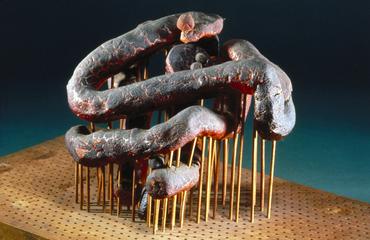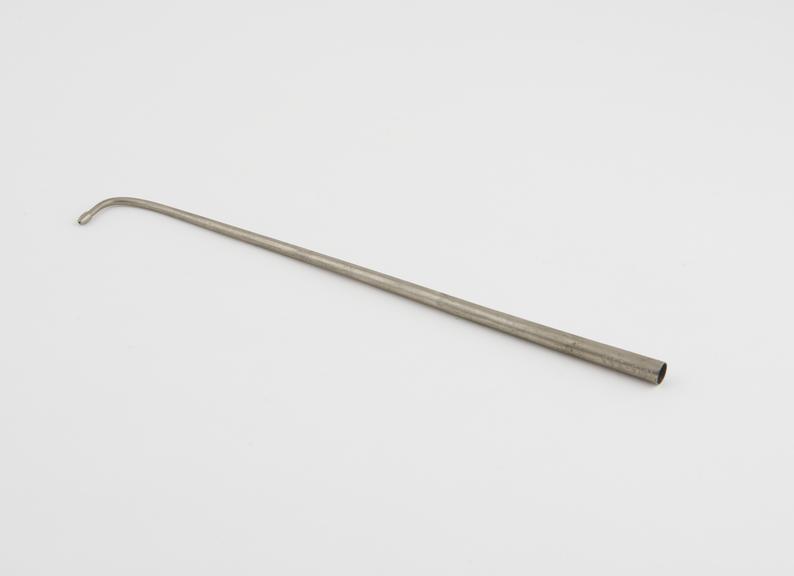
Simple mouth blowpipe

Simple mouth blowpipe.
The blowpipe was used to obtain an intensely hot flame over a small surface area. The instrument was originally used by goldsmiths and glassworkers, but in the 18th century its use was developed for analytical purposes, the first papers on the subject being published by Sven Rinman in 1746 and Anton von Swab in 1748.
The blowpipe operator blew a stream of air through a flame of a candle or spirit lamp at a mineral sample on a charcoal block. By playing the oxidising or reducing part of the flame on the substance, sometimes fusing it with the addition of a flux such as borax, a distinctive colour resulted, aiding identification.
The simple blowpipe consists of a tapering tube. However, it was difficult to maintain an even stream of air with it and A. F. Cronstedt (1702-1765) in his treatise An Essay towards a System of Mineralogy (London, 1770) introduced a blowpipe with a spherical reservoir which helped the operator produce a consistent flame. He also illustrated a candlestick used in analytical work. William Pepys (1775-1856), director of the Imperial Continental Gas Association, analysed Shetland iron ore and iron pyrites. He developed a blowpipe with a variable angle orifice c. 1810.
Details
- Category:
- Experimental Chemistry
- Object Number:
- 1915-555
- Materials:
- nickel plated brass
- type:
- blowpipe
- credit:
- J. J. Griffin & Sons Ltd




